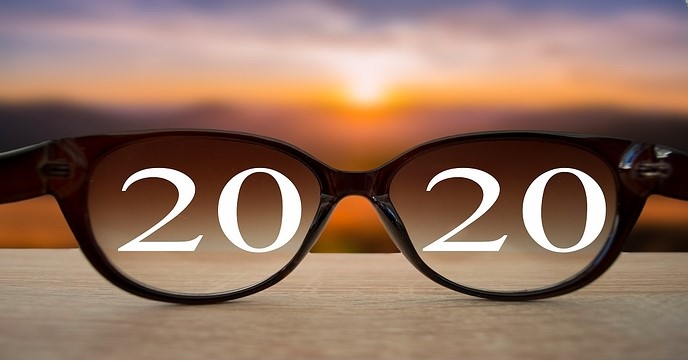What Does 20/20 Vision Mean?
If you’ve ever visited an optometrist, you’ve probably heard the phrase “20/20 vision” before. It’s a number that optometrists use to determine a person’s visual acuity. Everyone wishes they had 20/20 vision, and many people take advantage of glasses, contacts, or even procedures that can improve their vision. However, 20/20 vision isn’t the same thing as “perfect vision.”
20/20 Vision is Normal Visual Acuity
The term 20/20 vision is often used to describe people with normal visual acuity. However, this is not the only measure of eye-sight clarity. Individuals with better vision can also have a 20/15 vision or 6/4 vision. Twenty/20 vision refers to the clarity of a person’s vision when looking at an object 20 feet away.
To test visual acuity, a doctor will use a Snellen chart. This chart has progressively smaller letters on progressively smaller lines. The Snellen chart typically has 11 lines and the first letter on the chart is ‘E.’ This means that someone with 20/20 vision can see letters at a distance of twenty feet.
While having a 20/20 vision may seem like perfection, it’s important to understand that it doesn’t mean you have a perfect vision. A person with 20/20 vision can still have other visual skills, such as depth perception and peripheral vision. A doctor’s yearly dilated eye exam can help determine how well you can see details.
It Isn’t Perfect
The definition of 20/20 vision is somewhat misleading. In reality, no one can achieve a perfect vision, even if they have a 20/20 vision. In reality, 20/10 vision is actually better than 20/20, and 20/30 vision is much worse than 20/20 vision. That’s why you should never assume that you have a 20/20 vision.
If you’re fortunate enough to have a 20/20 vision, there are several other factors that affect your vision. For example, you might struggle to see objects at a distance of 400 feet, or you may have an extremely far-sighted vision. These factors could affect your daily life and can have negative consequences.
The first factor is your acuity or the quality of your vision. Acuity refers to how clear and sharp you can see objects at a distance. The second factor is how well you can focus. Having 20/20 vision is considered normal acuity. 20/30 vision is considered poor acuity, and it requires more strain to see objects at a distance. In addition to acuity, the second factor is peripheral vision and depth perception.
It Doesn’t Include Peripheral Vision
The term 20/20 vision is commonly used to describe normal vision. However, it doesn’t include peripheral vision, color vision, or depth perception. These skills are all important for recognizing objects but are not tested by 20/20 vision tests. In addition, 20/20 vision does not include the ability to see objects in three dimensions. People who are color blind have less than 20 percent of the color spectrum in their vision. This is also called a color vision deficiency.
There are a variety of conditions that can affect your vision, including macular degeneration, glaucoma, and diabetic retinopathy. If your visual acuity is less than 20/70 in the better eye, most eye care specialists consider it to be the poor vision. At this point, corrective lenses will not be able to restore your vision. Those who have visual acuities of 20/200 or less in both eyes are considered legally blind. To maintain a clear vision, you need to get a regular eye exam.
A 20/20 vision chart is a useful tool for checking the overall visual ability of a person. It has 11 lines and is commonly used by eye care professionals. The top row of the chart features a huge letter called the Snellen chart. As you move down the chart, letters become smaller. The farther down the chart you get, the closer you are to 20/20 vision.
It Isn’t a “Perfect” Vision
A person with 20/20 vision has excellent eyesight, but not “perfect” vision. Vision is a complex process, and there are many factors that can interfere with the ability to see clearly. The first step to finding out if you have “perfect” vision is to have a thorough eye exam. The exam will check many different aspects of your vision, including the clarity of your vision and the health of your eyes.
The Snellen chart is a chart that is used to test the visual acuity of individuals. It measures the ability of people to read letters and numbers at a distance of 20 feet. The Snellen chart was developed by a Dutch ophthalmologist in the 1800s. It is still used today to determine the visual acuity of people.
Having a 20/20 vision is the norm for many people, but not everyone has this vision. Those with vision problems may have 20/15 or 20/12 vision, which is considered “supernormal” vision. People with 20/15 or higher vision can wear glasses or contact lenses and still see 20/20.
